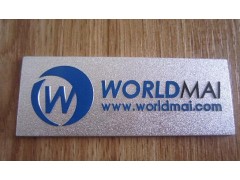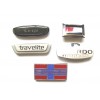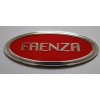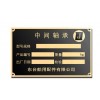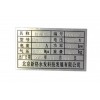Stereo badge production process and materials
Production of three-dimensional badge badge production is the more common one. Stereo badge material is generally copper, zinc alloy, and then using three-dimensional mold stamping or casting, together with paint, imitation enamel crafts. Compared to other forms of insignia, the three-dimensional image of the badge is the strongest sense of badges, stereoscopic, more expressive. Such as common relief medallions, 3D badge, 3D medallions are relatively strong three-dimensional stereoscopic badges.
?
???????Stereo badge production materials are generally two types of copper and zinc alloy, wherein the zinc alloy is the most used one. Zinc alloy made die-casting process commonly used three-dimensional badges, die-casting process is short for pressure casting, the molten alloy was poured into a pressure chamber filled with high-speed steel mold cavity, and alloy solidification under pressure to form a casting casting method, die casting method is different from other high-voltage and high-speed. The three-dimensional badge with copper production generally use stamping process, stamping presses and molds rely on external force is applied to the sheet, strip, tube and profiles, etc., thus producing plastic deformation or separation, so as to obtain the desired shape and size The method of forming stamping.
Stereo badge biggest feature is the strong three-dimensional effect, especially suitable for a variety of coins, medals, medals. In some articles, also put some perspective badge (such as some of the tape adhesive or pins etc.) attributed to category nameplate production, but the production process is the same.
Production of zinc alloy badge, process performance zinc alloy signs
To make high-quality zinc alloy die-casting products, we must first understand the performance of the production process zinc alloy, zinc alloy material has its own unique special properties, it is usually in the production of high-grade badges, signs, nameplates and other complex technology products, must be used zinc alloy die-casting process. Chen Yu handicraft factory Cangnan with superb zinc alloy die-casting production process, and solid strength. Affordable zinc alloy plate, high-quality zinc alloy badge, in the peer industry has a unique advantage, in order to go on with our common prosperity, we have to continue to innovate in the future, strive to meet our customer requirements.
Zinc alloy is a zinc-based alloy adding other elements. Often added alloying elements are aluminum, copper, magnesium, cadmium, lead, titanium and other low-temperature zinc alloy. Zinc alloy low melting point, good fluidity, easy to welding, brazing and plastic processing, corrosion in the atmosphere, disability facilitate recycling and remelting material; however, low creep strength, prone to dimensional changes caused by natural aging. Preparation of melting, casting or pressure processing to become useful. According to the manufacturing process can be divided into cast zinc alloy and zinc alloy deformation.
????The main element of zinc alloy with aluminum, copper and magnesium. Zinc alloy by deformation processing can be divided into two categories with cast zinc alloy. Cast zinc alloy fluidity and good corrosion resistance, suitable for die-casting instrumentation, automotive parts case Wait.
First, the characteristics of the zinc alloy
1. The relatively high specific gravity.
2. casting performance, or complex die-cast shapes, thin wall precision castings, smooth surface.
3. can be surface treatment: electroplating, painting, painting, polishing and grinding.
The melting and do not smoke when iron-casting, pressure-type non-corrosive, non-stick mold.
5. Have a good room temperature mechanical properties and wear resistance.
6. The low melting point, melting at 385 ℃, easy casting.
Use process issues to be aware of:
1. poor corrosion resistance. When the alloy composition of impurity elements such as lead, cadmium, tin than the standard time, resulting in deformation of casting aging, expressed as a volume swell, mechanical properties, especially ductility decreased significantly, a long time or even rupture. Lead, tin, cadmium zinc alloys solubility is very small, and therefore focused on the grain boundaries become the cathode, aluminum-rich solid solution of an anode, in water vapor (electrolyte) presence of conditions to foster intergranular electrochemical corrosion. Casting due to intergranular corrosion and aging.
2. Organization of aging effect of zinc alloy mainly containing Al and Cu, Zn-containing zinc-rich solid solution and Al-rich solid solution formed, their solubility decreases with temperature drop. However, due to the solidification casting speed is extremely fast, and therefore to room temperature, the solubility of solid solution is substantially saturated. After a certain time, this over-saturation phenomenon will gradually lifted, leaving the cast to shape and size slightly to change.
3. zinc alloy die castings should not be used at high temperature and low temperature (0 ℃ or less) work environment. Zinc alloy at room temperature have good mechanical properties. But at a high temperature impact properties were significantly decreased under tensile strength and low temperatures.

